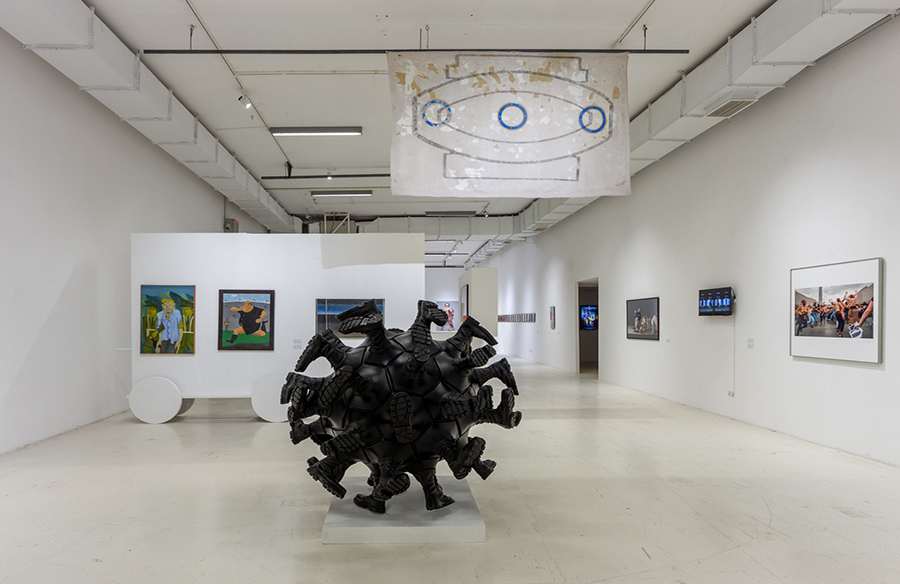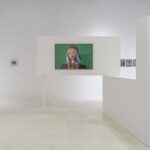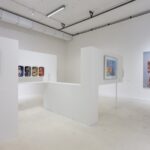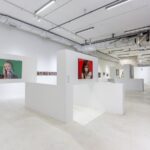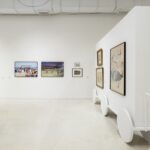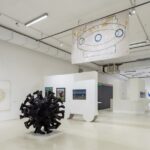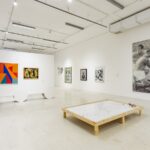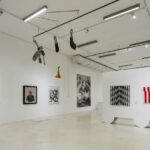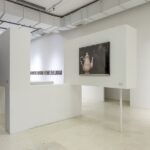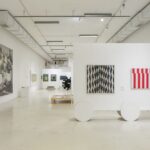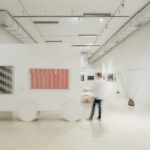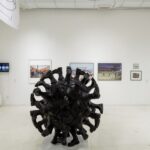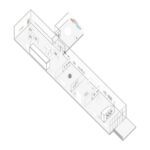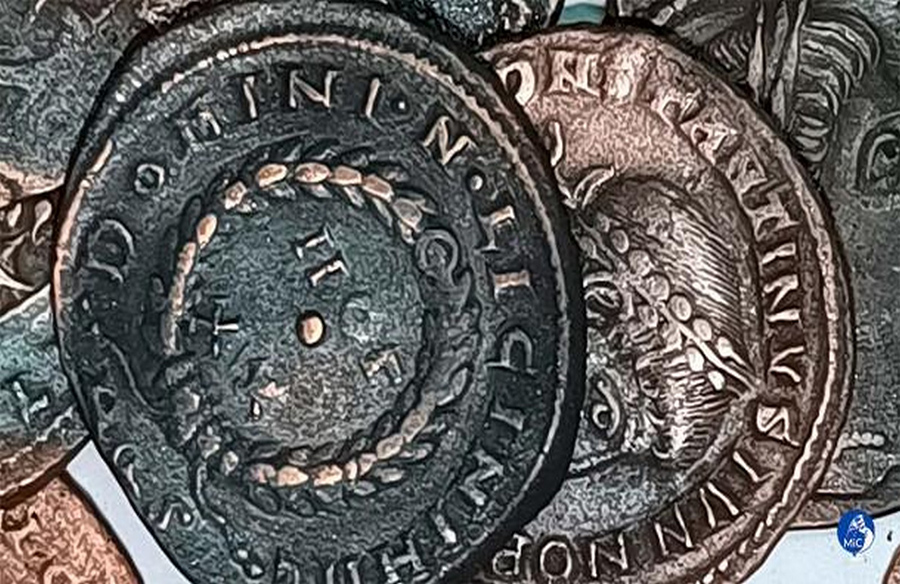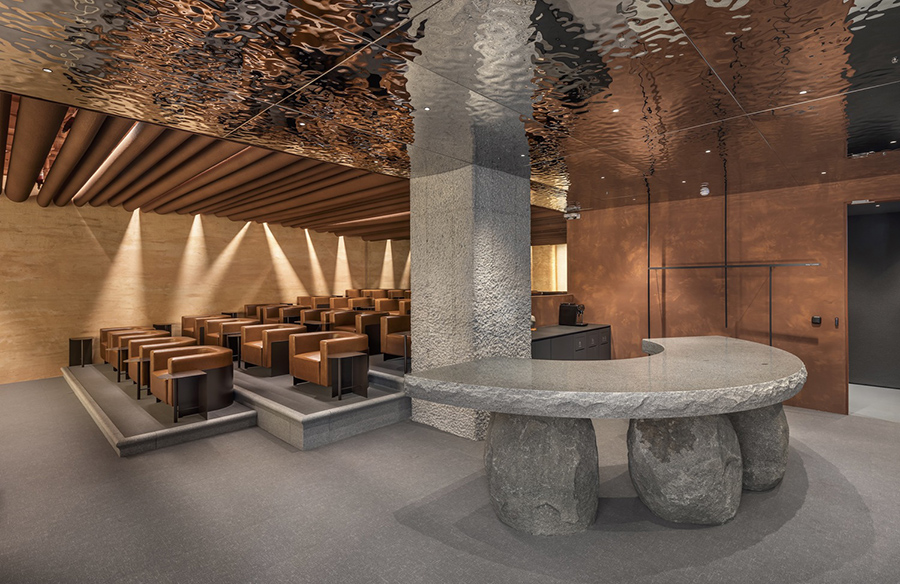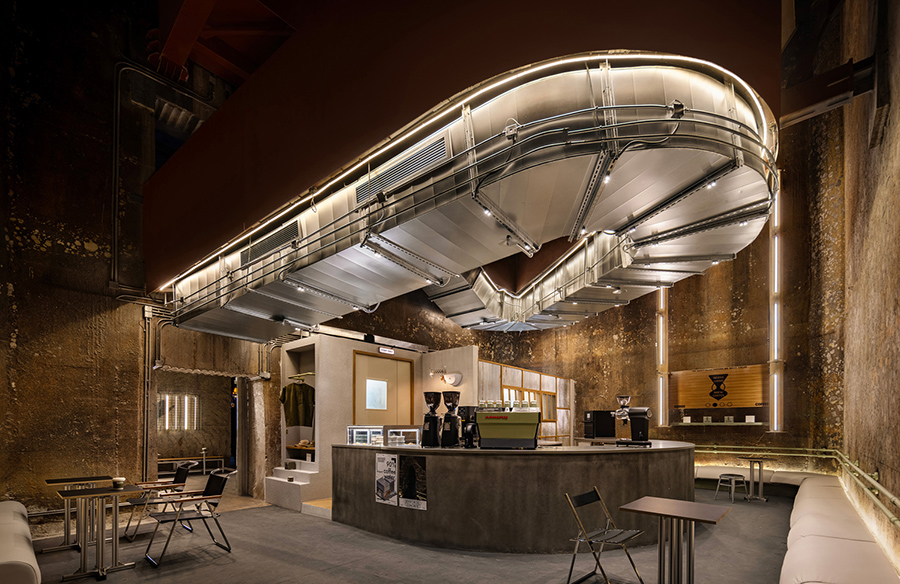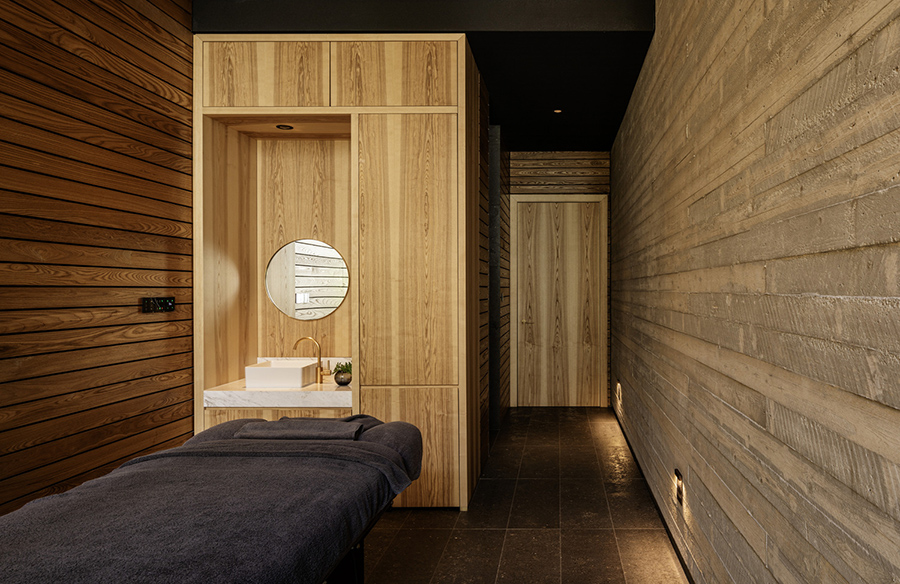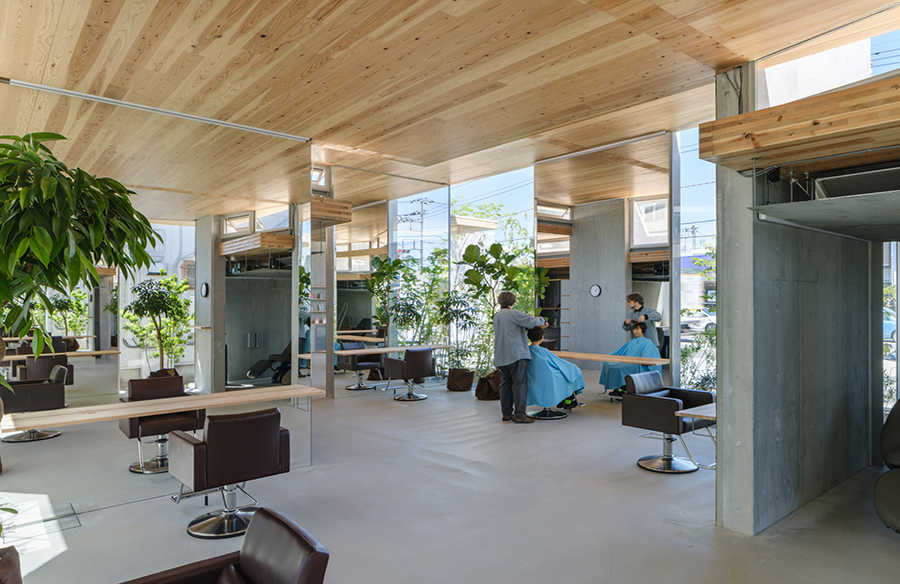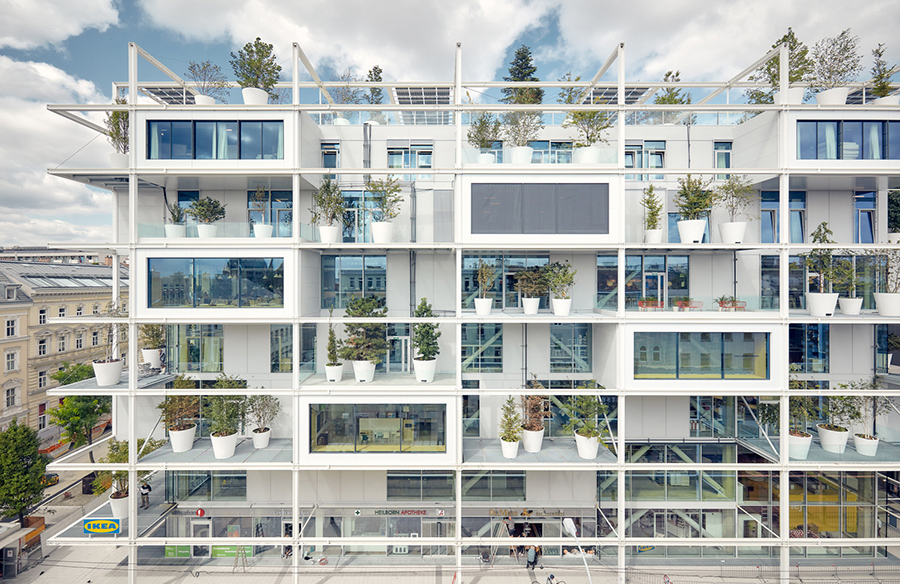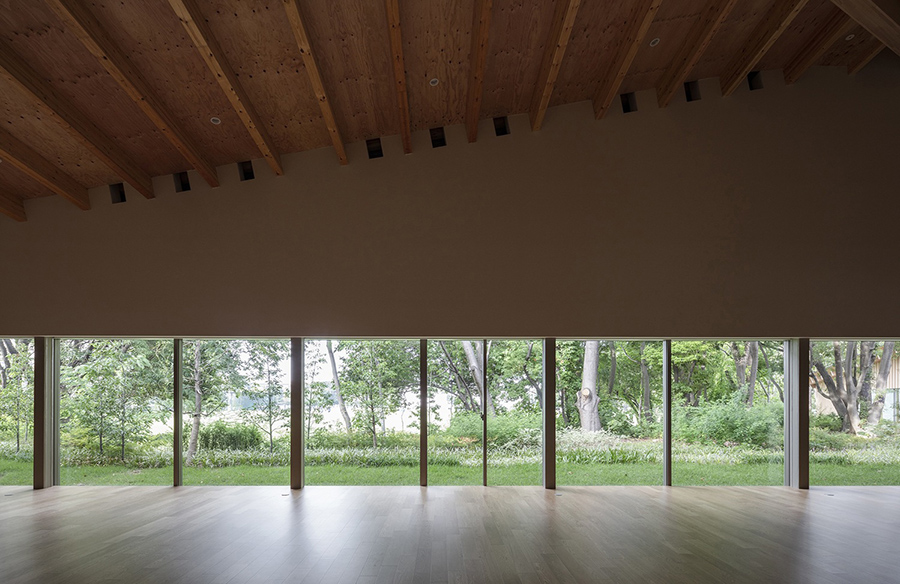In the heart of Valparaiso, Chile, the Homo Ludens exhibition, crafted by architects Catalina Poblete and Guillermo Hevia García, challenges conventional notions of art display by infusing the concept of play into its very core. Transcending traditional static exhibitions, Homo Ludens transforms the Cultural Park of Valparaiso, formerly a prison, into a dynamic space where art and play converge.
Unleashing Play in a Challenging Space
Spanning a room measuring 54 meters in length, 9 meters in width, and 5 meters in height, the Homo Ludens exhibition faces the daunting task of housing approximately 100 artworks across four thematic axes within the confines of the Cultural Park. The unique spatial constraints posed by the venue demand innovative approaches to both curation and museography.
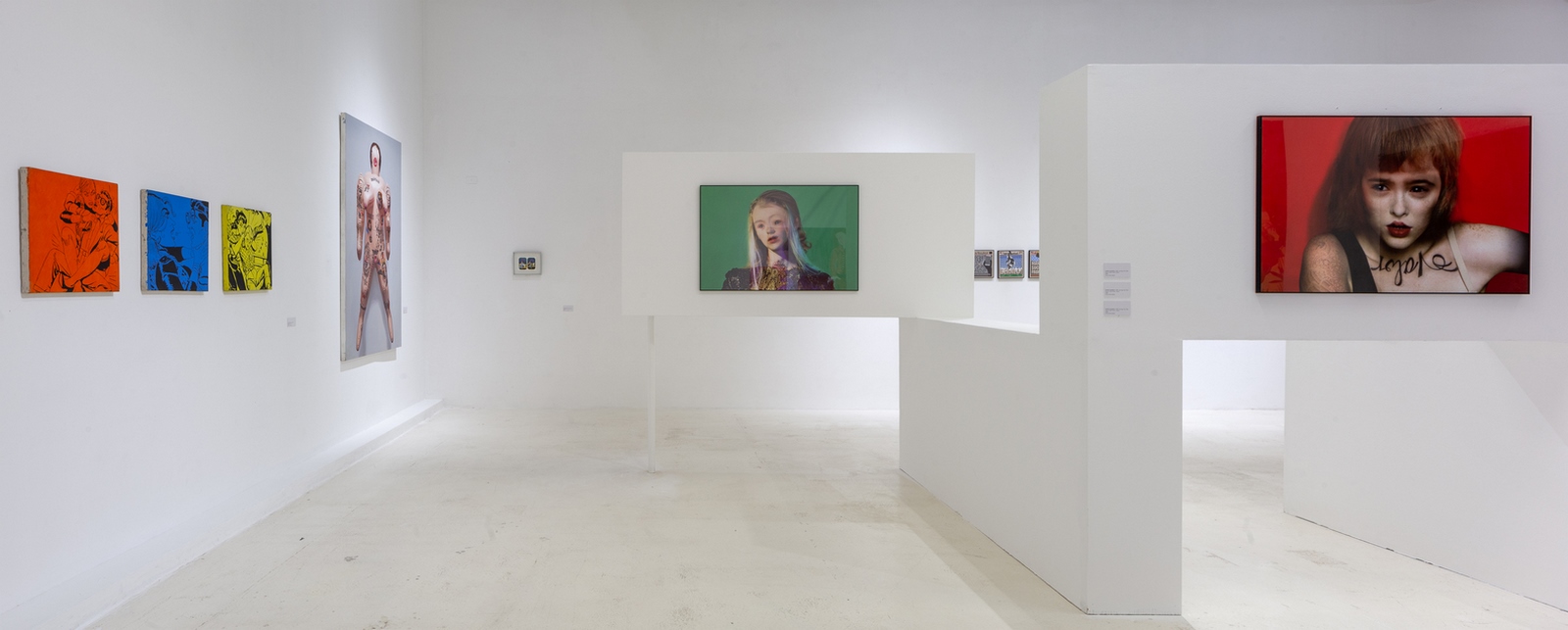
Shifting from Static to Dynamic Spaces
Departing from conventional exhibition strategies, which often adhere to static arrangements along longitudinal walls or utilize partitioned spaces, Homo Ludens embraces change and movement as central tenets of its museography. Rejecting predictability, the exhibition introduces small mechanical operations that imbue the space with unexpected transformations, inviting visitors to engage in an ever-evolving spatial dialogue with the artworks.
Embracing the Unexpected
At the heart of Homo Ludens are three mobile devices, each spanning 4 meters in length, capable of fragmenting or unifying the exhibition space with a single movement. These dynamic elements redefine the relationship between artworks, ensuring that visitors never encounter the same spatial configuration twice. By fostering an environment of constant flux, the exhibition invites participants to actively shape their spatial encounters, thus reimagining the very essence of play within an artistic context.
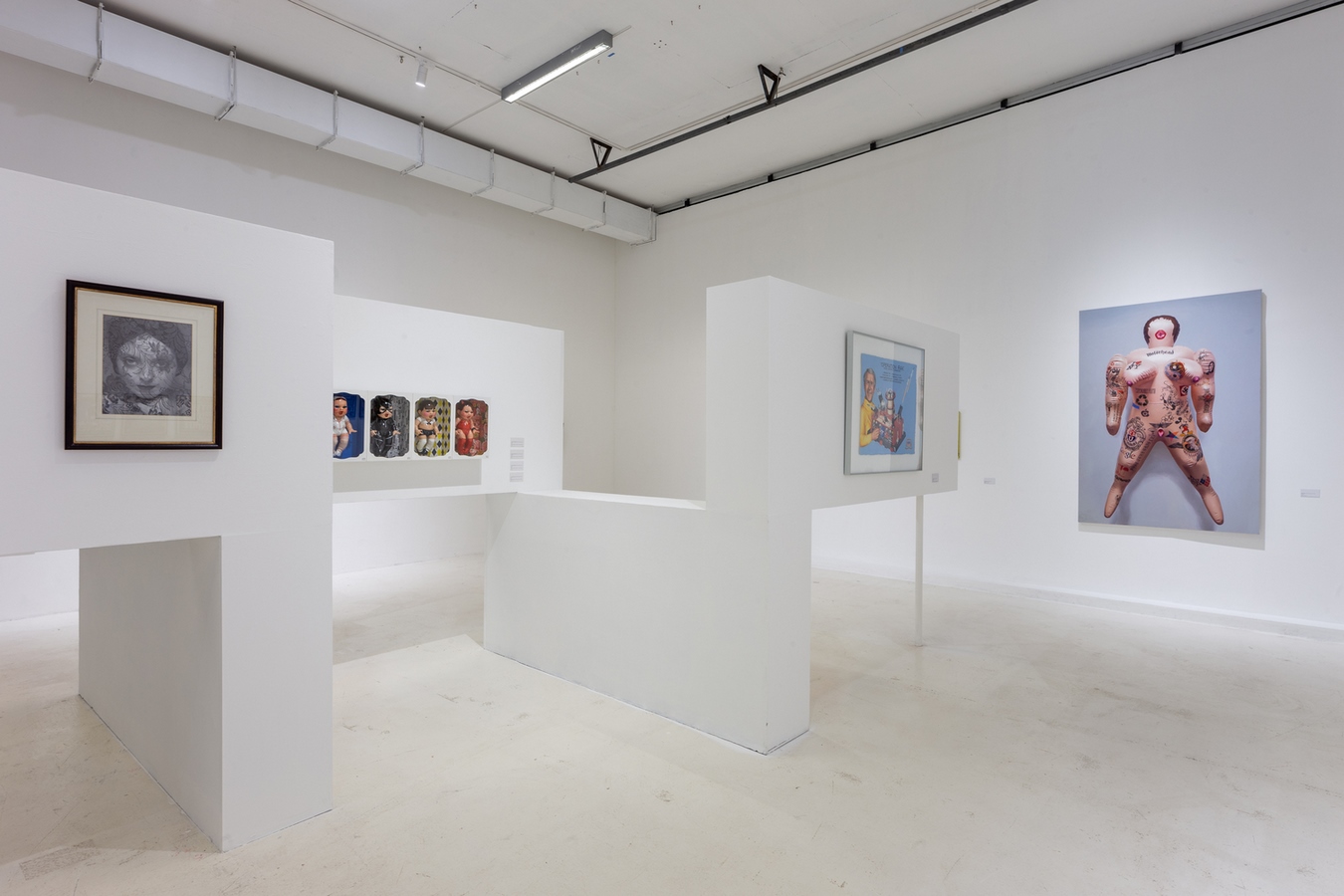
Redefining Spatial Experiences
Through its innovative approach to museography, Homo Ludens transcends traditional boundaries, offering visitors a multifaceted journey where spatial dynamics intertwine with artistic interpretation. By infusing the exhibition space with an element of play, Catalina Poblete and Guillermo Hevia García have redefined the traditional paradigm of art display, inviting participants to actively engage in the creation of ever-evolving spatial narratives.
